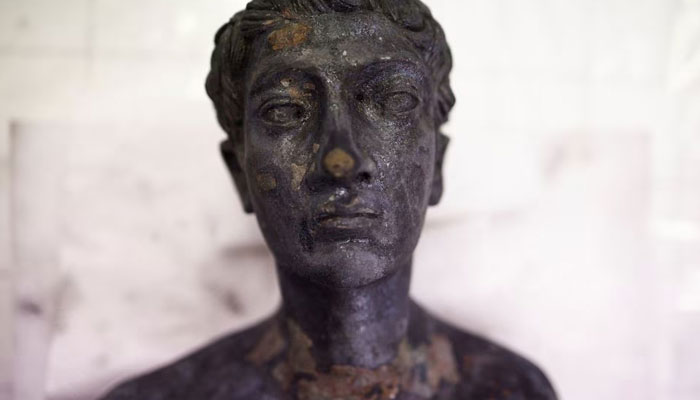Retired garbage man unearths ancient bronze statues in Italy
This extraordinary find comprises around two dozen bronze statues dating from the third century BC to the first century AD
June 04, 2023

One of Italy's most significant archaeological discoveries, made possible in part by the intuition of a retired garbage man, is set to be showcased this month.
A collection of Etruscan and Roman statues, salvaged from the mud in Tuscany, will go on display at Rome's Quirinale Palace after months of restoration. This extraordinary find comprises around two dozen bronze statues dating from the third century BC to the first century AD.
In November, experts declared the discovery as Italy's largest collection of ancient bronze statues, an accomplishment that would "rewrite history." The statues were unearthed between 2021 and 2022 in the village of San Casciano dei Bagni, a hilltop community known for its thermal baths and suspected ancient ruins.
Initial attempts to locate the statues proved unsuccessful. Excavations in 2019 near the village's public baths yielded only remnants of walls. However, a breakthrough occurred when Stefano Petrini, a former bin man and local history enthusiast, had a moment of inspiration. Recalling the sight of ancient Roman columns on the opposite side of the public baths, glimpsed from his late friend's abandoned garden, Petrini shared his insight with archaeologists. This revelation led them to the right spot.
The head of the San Casciano archaeological project, Emanuele Mariotti, described his team as becoming "quite desperate" before receiving Petrini's tip. It eventually led to the discovery of a shrine at the heart of the ancient spa complex. The statues found within were offerings made by Romans and Etruscans seeking divine favour for good health. Coins, sculptures of body parts, and other artefacts were also recovered from the site.
Among the remarkable finds was a bronze statue of a "scrawny boy," approximately 90 cm (35 inches) tall, portraying a young Roman afflicted with a bone disease. Ada Salvi, an archaeologist from the Culture Ministry, explained that the statue initially appeared to depict an athlete emerging from the mud but was later identified as that a sick person. Traces of other unique offerings, such as eggshells, pine cones, surgical tools, and a 2,000-year-old lock of curly hair, were also discovered, shedding light on the intricate connection between health, religion, and spirituality in Roman and Etruscan cultures.
Excavations are set to resume, as it is believed that more treasures will be found in the coming years. The statues and artefacts will eventually find a new home in a museum planned for San Casciano, offering economic opportunities and cultural enrichment to the village. Stefano Petrini humbly attributes the discovery to the collective efforts of many, emphasising that important accomplishments are seldom the result of a sole individual's contribution.











